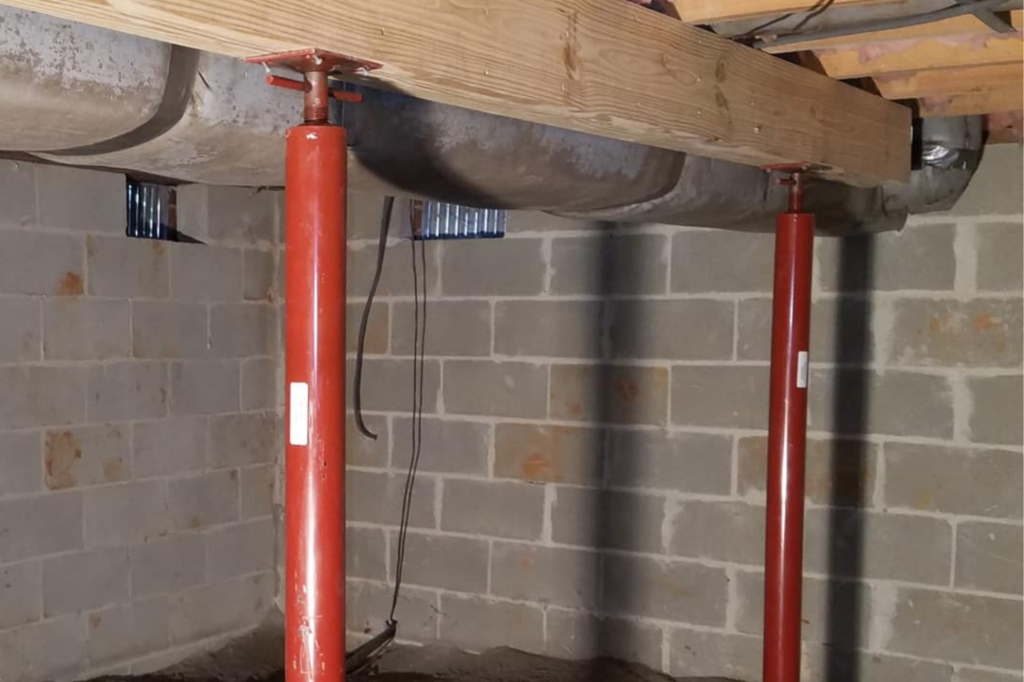If you notice cracks in your walls, pay attention to their type and size. Hairline cracks under 1/16 inch are often cosmetic, but wider cracks—especially those over 1/8 inch—could indicate foundation issues, making foundation repair a necessary consideration. Horizontal cracks signal significant stress from hydrostatic pressure, while diagonal cracks suggest uneven settlement. Soil movement, often due to expansive clay, accounts for many issues; poor drainage compounds this stress. Use calipers to monitor crack changes and document them. Stair-step cracks in brick walls are particularly concerning and require expert evaluation. For a detailed understanding of these structural indicators, consider exploring further insights on how to address them effectively.
Key Takeaways
- Cracks wider than 1/8 inch may indicate potential structural issues.
- Horizontal cracks often suggest significant foundation stress and require immediate evaluation.
- Diagonal cracks could signal uneven foundation settlement and need a professional assessment.
- Sticking doors or sloping floors can accompany foundation problems and warrant inspection.
- Poor drainage and soil movement are common causes of foundation issues.
Types of Wall Cracks
When examining your home’s walls, it’s crucial to recognize the various types of cracks, as they can indicate different underlying issues.
Hairline cracks, often less than 1/16 inch wide, are typically cosmetic but should be monitored for changes. Vertical cracks, generally harmless, occur due to house settling; however, if they grow wider than 1/8 inch, they may become one of the signs of foundation problems.
Horizontal cracks are a stronger indicator of foundation stress. Their presence along basement walls suggests possible hydrostatic pressure pushing against the foundation.
Diagonal cracks, often appearing at angles of 30 to 45 degrees, may point to uneven foundation settlement. These might result from differential soil movement beneath your home.
Stair-step cracks found in brick walls are serious red flags. They mimic the shape of a staircase and usually imply significant foundation issues, possibly requiring immediate professional assessment.
Cracks around doors and windows can signal foundation movement, especially if they accompany sticking doors or windows.
Identifying these wall cracks accurately will help you assess potential structural concerns and determine when professional evaluation is necessary to protect your home’s integrity.
Causes of Foundation Issues
Identifying wall cracks, such as stair-step and diagonal patterns, often points to deeper issues in your home’s foundation. These cracks in walls mean a myriad of potential causes, including soil movement and poor drainage.
When to worry about wall cracks arises when you notice cracks growing wider than 1/8 inch, a typical threshold indicating potential structural issues.
Another critical factor is poor drainage. Water pooling near the foundation increases hydrostatic pressure, compromising stability. Verify gutters extend at least 10 feet away from the house to mitigate this risk.
Tree roots can also contribute to foundation issues by extracting moisture and causing soil shrinkage, leading to uneven settlement—plant trees no closer than 20 feet from your foundation.
Additionally, poor construction practices, such as using inferior materials or ignoring proper curing times, can manifest as early foundation problems.
Wall cracks can signal structural issues, so precise analysis is key. Cracks under 1/8 inch may be cosmetic, but wider ones could indicate foundation problems. Making foundation repairs Richmond VA, location is essential for local homeowners. Horizontal cracks are often more serious than vertical ones, and monitoring changes over time is crucial. If unsure, consult a structural engineer.
Horizontal vs. Vertical Cracks
Although they might seem similar at first glance, horizontal and vertical cracks in walls often suggest different underlying foundation issues.
Horizontal cracks usually indicate significant foundation stress, often resulting from lateral pressure exerted by expanding soil or water saturation. These stresses can cause walls to bow or even collapse if left unaddressed. In technical terms, a horizontal crack wider than 1/8 inch signals a vital structural concern necessitating immediate evaluation.
In contrast, vertical cracks typically emerge from natural settling processes. As your home settles, minor vertical cracks—often less than 1/16 inch—can appear. These cracks are usually less alarming, provided they maintain consistent width and don’t grow over time.
However, if vertical cracks exceed 1/8 inch or visibly expand, it might indicate foundation movement beyond normal settling.
When evaluating these cracks, precise measurements and consistent monitoring are essential. Use a caliper for accurate width evaluation and document any changes over time.

When to Worry
Have you ever wondered if those cracks in your walls are more than just cosmetic blemishes? It’s essential to distinguish between harmless and alarming cracks.
Start by examining the width of the crack. If a crack exceeds 1/8 inch (3.175 mm), it’s time to pay attention. Such dimensions might signify significant structural stress, demanding immediate professional evaluation.
Additionally, the pattern and growth rate of the crack should be observed. A crack that expands over weeks or months indicates progressive foundation movement.
Analyze the crack orientation: horizontal cracks often signal excessive lateral pressure on your foundation, while diagonal cracks might suggest uneven settlement. These patterns, when combined with other indicators like sticking doors or sloping floors, should prompt concern.
Utilize precision tools like levels to detect floor slope changes, a sign of shifting foundations.
Finally, assess the surrounding context. Are there fluctuating moisture levels, poor drainage, or nearby construction vibrations? These factors can exacerbate foundation problems.
Inspection and Assessment
How do you ensure your home’s foundation is structurally sound? Start by conducting a meticulous inspection.
Utilize a tape measure to determine crack widths; any crack exceeding 1/8 inch should be a red flag. Document crack patterns and monitor their progression over time. This systematic observation will help you assess whether these are typical settling issues or signs of more severe foundation problems.
Use a level to check floor gradients. A slope greater than 1/2 inch over 20 feet may suggest foundation settlement. Pay attention to secondary indicators such as doors that stick or gaps forming between walls and ceilings. These symptoms often accompany foundation shifts.
Evaluate external conditions, like soil moisture levels and drainage efficiency. Poor drainage can exacerbate foundation stress, leading to wall cracks. Confirm downspouts extend at least 5 feet away from the foundation to prevent water pooling.
Maintain detailed records of your findings. This data-driven approach allows for a thorough assessment, identifying potential issues early.
If your inspection reveals concerns about measurements or patterns, it’s essential to consult a foundation specialist promptly for a professional evaluation and to ensure your home’s structural integrity is preserved.
Professional Repair Options
Upon conducting a thorough inspection and documenting any concerning signs, consider exploring professional repair options to address potential foundation issues.
First, contact a qualified structural engineer to perform a detailed analysis of your foundation’s integrity. This expert will evaluate the severity of cracks, measuring their width and length with precision tools. If cracks exceed 1/8 inch in width, it’s essential to proceed with foundation repair services—ignoring them could lead to costly repairs.
Once the assessment is complete, a foundation repair specialist might recommend underpinning, which involves extending the foundation depth to reach more stable soil layers. This technique is effective for stabilizing structures on expansive or shifting soils.
Alternatively, slab jacking can be considered for lifting sunken areas by injecting grout beneath the concrete. This method is ideal for minor settling issues.
If water intrusion is a concern, waterproofing and drainage solutions should be implemented. Installing French drains or sump pumps can effectively manage water flow away from your foundation, minimizing hydrostatic pressure.
Each repair strategy should be tailored to the specific conditions of your home. Consulting with professionals guarantees that the chosen method addresses the root cause, safeguarding your investment long-term.
In Summary
Wall cracks can be a warning sign of underlying structural issues, and analyzing them with precision is essential. Start by measuring the crack width—if it’s less than 1/8 inch, it might be cosmetic, but wider cracks could indicate foundation problems. Pay attention to orientation; horizontal cracks are often more concerning than vertical ones. Additionally, monitor any changes over time, as growing cracks may signal worsening conditions. If you’re uncertain, calling a structural engineer for an inspection is a smart move.
At Tiger C Construction, LLC, we understand the importance of early detection and prompt action. Addressing wall cracks early can prevent further structural damage and save on costly repairs.
